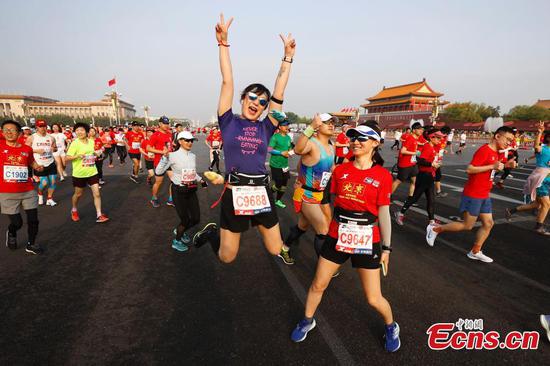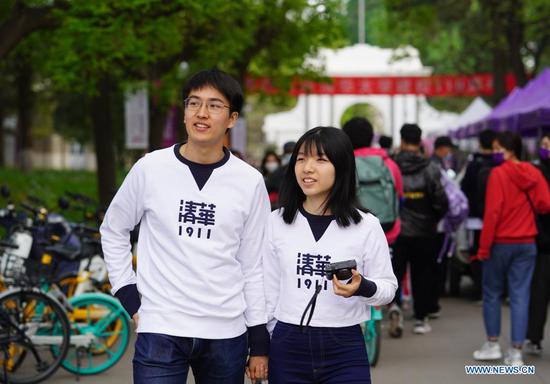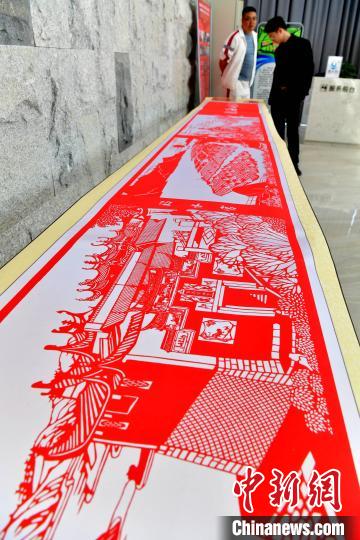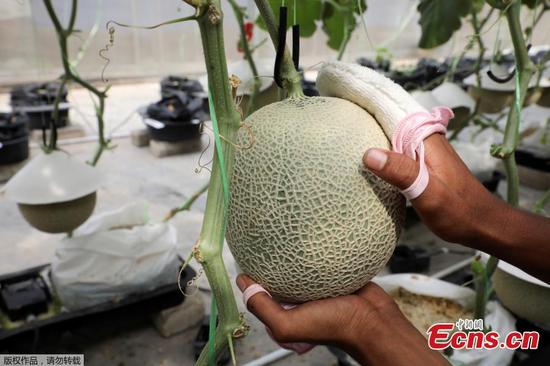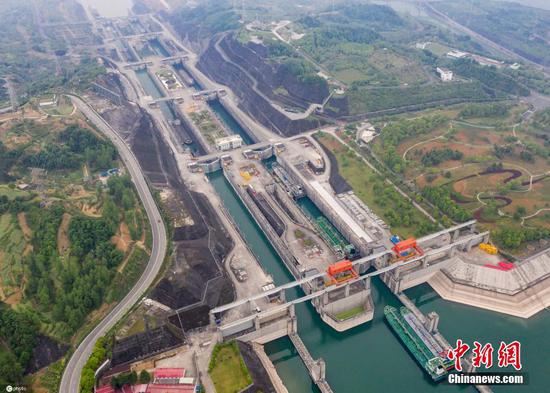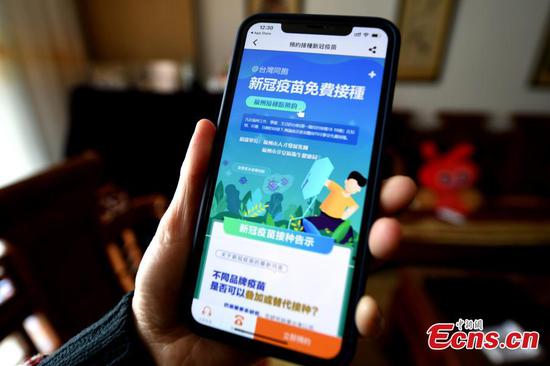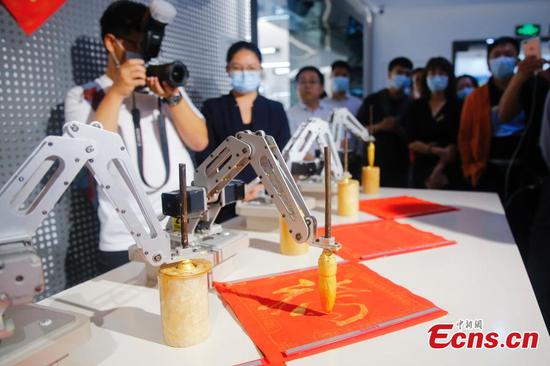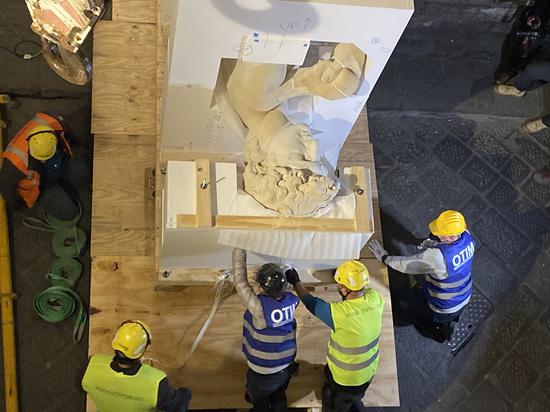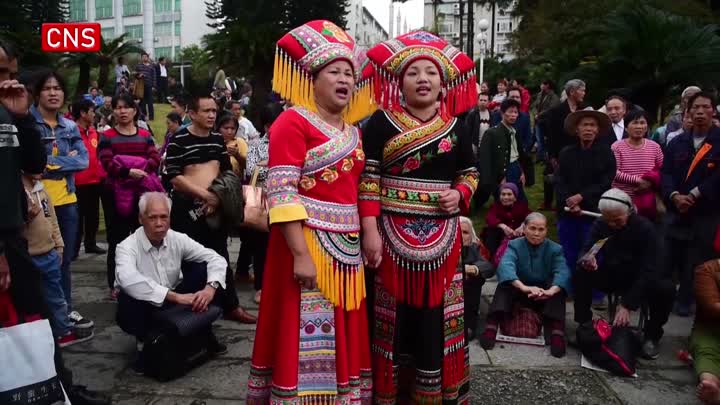
Photo taken on April 25, 2021 shows the digital achievements exhibition during the fourth Digital China Summit in Fuzhou, southeast China's Fujian Province. (Xinhua/Wei Peiquan)
ENABLING REAL ECONOMY
The use of digital technologies helped China tackle the COVID-19 epidemic in many scenarios such as contact tracing, triaging people with fevers, and telemedicine. Now China is promoting the in-depth integration of digital technologies with the real economy to upgrade its industries and blaze a path of high-quality development.
The trend of smart manufacturing has swept the country. In sportswear giant ANTA Sports' smart factory in Xiamen, workers no longer need to bundle clothes together and carry them to their next processing location.
Powered by industrial automation, big data and the Internet of Things, the workshop can carry out automatic tailoring, integrated logistics and intelligent sorting, among over a dozen functions.
A smart hanging system moves clothes around in the workshop and takes them to different floors for their next procedures, relieving workers of their previous heavy-lifting duties.
"We were inspired by the bullet train when designing the system, which allows us to trace movements to each 'stop' of the production process," said Zhong Xueliang, a project manager at the factory.
Each piece that comes out of the system is standardized and its quality is guaranteed, Zhong noted. The system can shorten the process of making one piece of clothing from at least half a month to a minimum of three and a half hours.
The Xiamen factory is just one of China's many new smart factories. In Quanzhou City, a manufacturing hub in Fujian, over 1,500 large enterprises are going through digital transformations.
"Digitalization helps increase labor productivity and economic output per person," said Yang Xueshan, a professor at Peking University. "It is essential to integrate digital tech with physical factories and the real economy."









